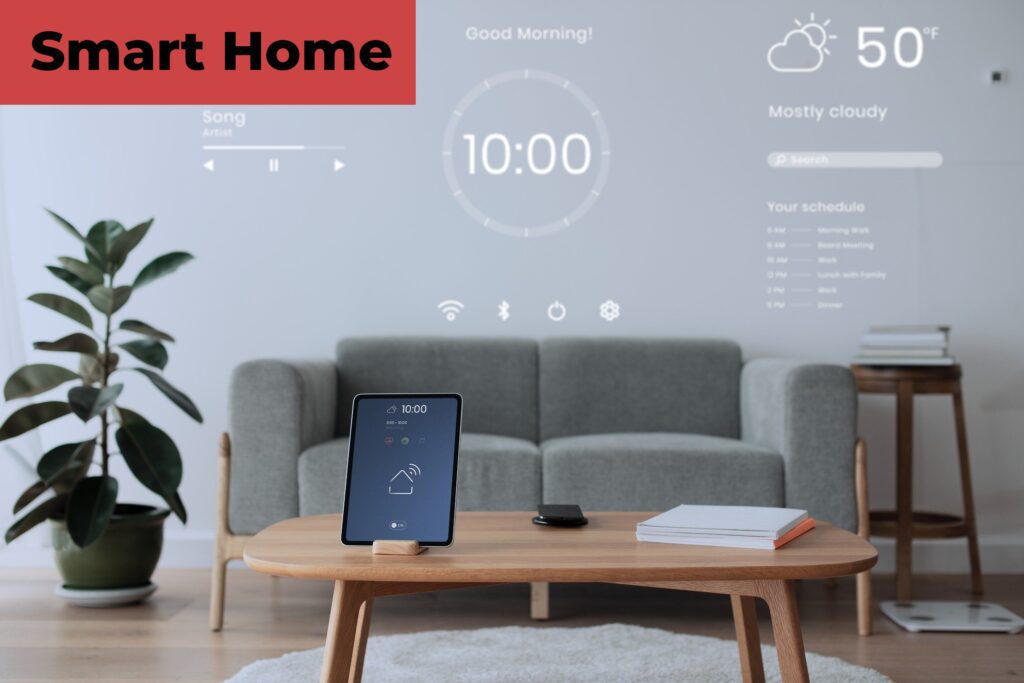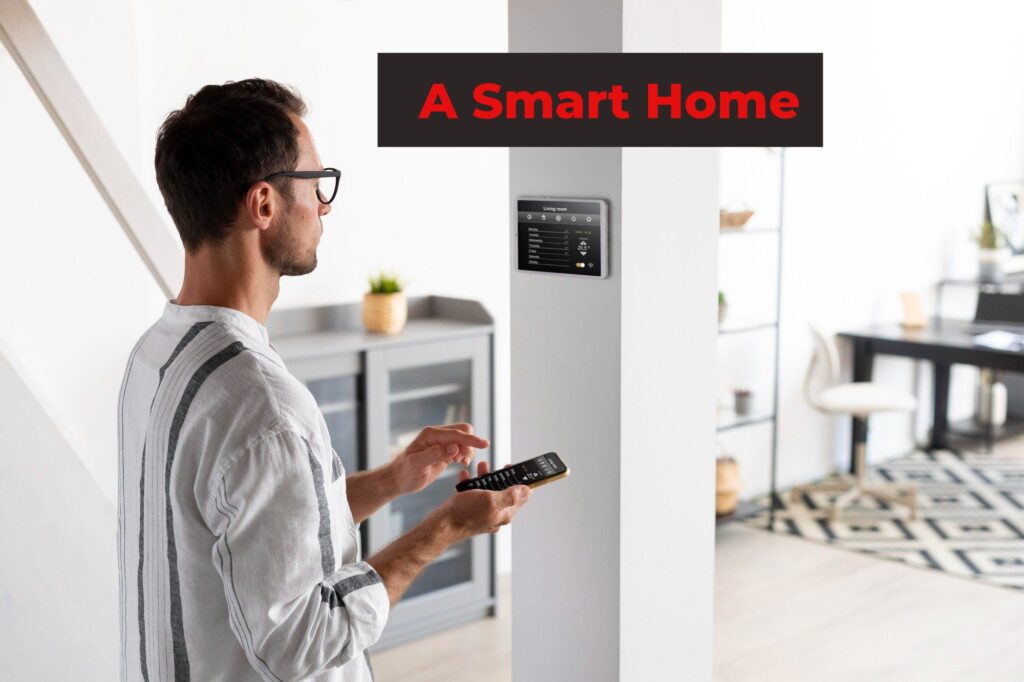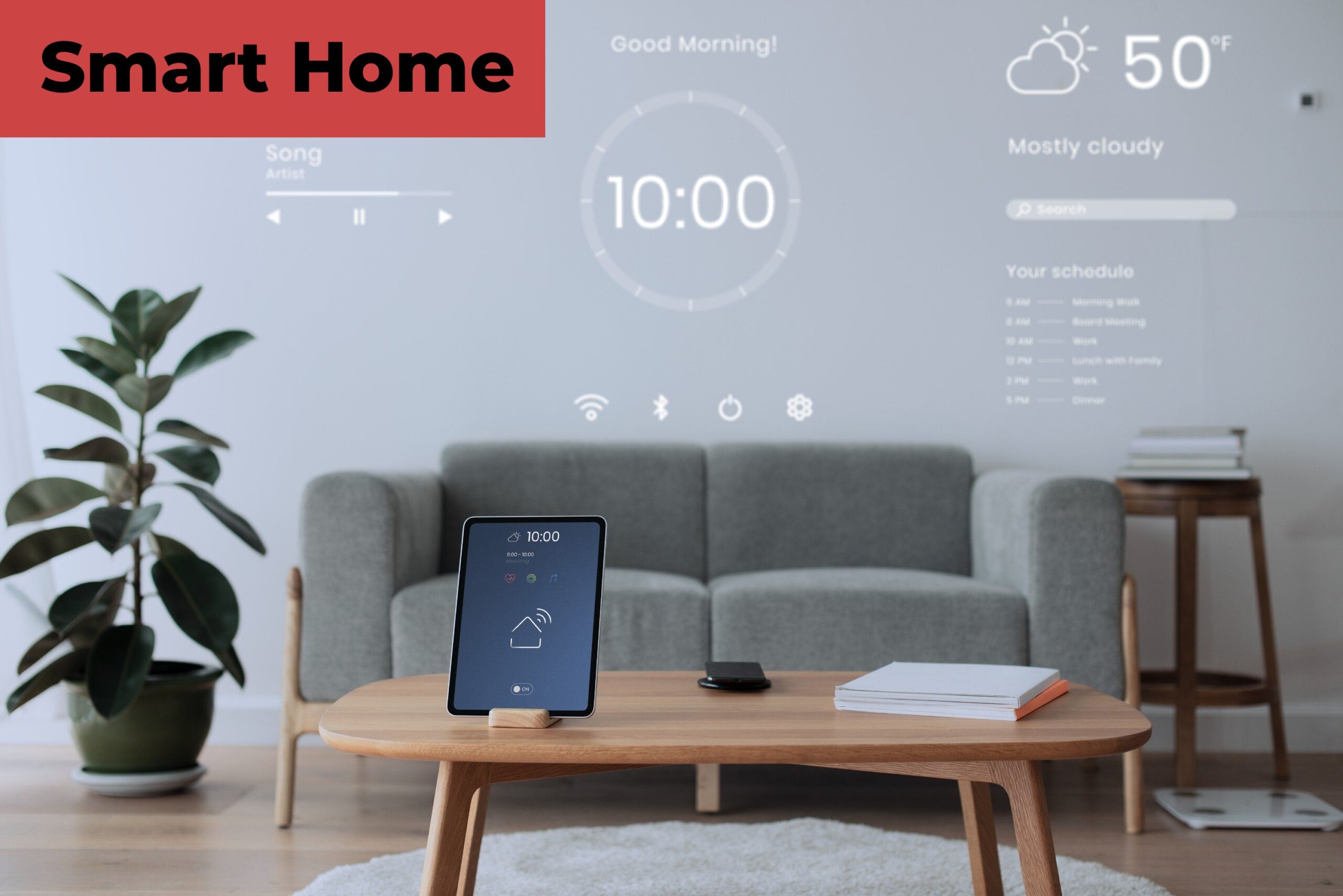A smart home is a type that uses devices with connection to the internet. It also to enable far away administration and oversight of electronic devices and networks, such as warmth and lighting.
By enabling homeowners to control smart devices. usually through a smart home app on their smartphone or another networked device. The smart home technology—also known as home automation. It or domotics from the Greek word domus, which were, meaning home—offers them safety, ease of use, comfort, and cost-effectiveness.
Smart home systems and gadgets, which are a component of the internet of things (IoT). It frequently work in tandem, exchanging consumer usage data and automating tasks according to the preferences of the homeowners.

How does smart home technology work?
A smart home is a network of connected devices . A collection of various smart appliances and gadgets It can be controlled remotely .
Every gadget in a smart home is networked and accessible from a single central location, such as a laptop, tablet, smartphone, or gaming console. One home automation system may operate a variety of devices. It including lights, door locks, thermostats, televisions, cameras, house monitors, and appliances like the refrigerator.
Installed on a mobile device or other networked device. The system allows the user to schedule the execution of devices and tasks.
Learning yourself qualities are built into smart home products. They can become familiar with the homeowner’s routines and adapt as necessary. Brightness regulation in smart homes enables customers to reduce money on energy costs and use less electricity.
Examples:
There are now smart home alternatives for almost every area of life where technology has invaded the home, such as lightbulbs, dishwashers, and other appliances:
- Smart TVs.By connecting to the internet, these TVs can access content via apps. It including music and video that is available whenever you want. Voice or gesture recognition is another feature of some smart TVs..
- Smart lighting systems.Apart from being remotely controlled and customizable, smart lighting systems are also able to recognize when people are in the room and change the lighting accordingly. Additionally, smart lightbulbs are able to self-regulate according to daylight availability.
- Smart thermostats.With built-in Wi-Fi, smart thermostats like Google Nest enable users to remotely control, schedule, and monitor the temperature of their homes. Additionally, these gadgets pick up on homeowners’ habits and adjust settings automatically to maximize efficiency and comfort. Additionally, smart thermostats can remind users to replace their filters and report energy usage.
- Smart door locks and garage door openers. Smart locks and garage door openers are tools that homeowners can use to allow or prohibit guests from entering their homes. Additionally, smart locks are able to recognize when residents are close by and open the doors for them.
- Smart security cameras and systems. Residents are able to keep an eye on their homes while they are away thanks to smart security cameras and doorbells like Ring. Smart motion sensors can distinguish between residents, guests, pets, and intruders. If they notice any suspicious activity, they can notify the appropriate authorities.
- Smart pet and lawn care. Connected feeders allow for automated pet care. Connected timers can be used to water lawns and houseplants.
- Smart kitchen appliances. Smart kitchen appliances come in a variety of brands, including LG, GE, and Samsung. These appliances include toasters and slow cookers; washing machines and dryers in the laundry room; smart refrigerators that make shopping lists, monitor expiration dates, or even make recipes based on ingredients that are currently on hand; and smart coffee makers that can brew a fresh cup automatically at a predetermined time.

Components of Smart Home:
The main components of smart home are
- HeatingMore control over heating devices is now possible with smart home products, including the ability to turn them on and off and adjust settings. In order to automatically turn on or off when specific conditions are met, smart products may be equipped with temperature or humidity sensors. Air conditioners are included in this category of smart home innovations. LightingLighting products now provide homeowners with more features and convenience, frequently through the use of a smartphone, tablet, or product-specific remote control. Lights can be turned on and off, scheduled, or programmed to change according to the times of day or night. Lights can frequently be programmed to change in response to motion, just like some more conventional products. Smart bulbs have the ability to connect via Wi-Fi and show metrics or statistics on your phone.There may be smart home devices in this lighting category that regulate the amount of light. It is possible to install automatic blinds and program them to close according to sunrise schedules. As an alternative, electronic curtains let users control their blinds with a portable gadget.
- Audio/VisualThe numerous entertainment devices that can be linked to one another and managed with a single remote control is one of the more alluring features of smart homes. Applications can be used to control the playback of speakers and television. They can be controlled by voice command or in accordance with a schedule.
- SecurityThe improved security features that a smart home provides are among its most significant features. Camera-equipped products can record video, track motion, or enable live video feeds. These can be placed to record specific regions of your property or to sync with a doorbell that rings. Products can help you make video and audio calls to people at your door. Advanced security kits are also installed in a lot of smart homes. Motion sensor detectors, home monitoring, alerts and notifications about questionable activity, and the capability to remotely lock windows or doors with a phone are all included in these kits.
- OtherDigital assistants and home hubs can also be found in smart homes. People use their voices and commands to interact with these devices. They can set up conference calls, manage your calendar, answer inquiries, and send out alerts.Smart smoke and carbon monoxide detectors can be linked to your phone to alert you when you are not home, in addition to setting off an alarm. In many cases, these devices can be set up to alert other specified contacts in case of an emergency.It has long been possible for people to program automated irrigation systems. These days, climate and environmental conditions can be detected by smart irrigation systems and taken into account when scheduling watering. In order to save water, smart irrigation systems can also regulate irrigation and keep an eye on conditions related to moisture.
- Advantages and Disadvantages of Smart Homme:
- Advantages
Property owners benefit from the efficiency that modern technologies for smart homes offer. Homeowners can use a single device, typically a smartphone or tablet, to control all of their appliances, lighting, thermostats, and other features rather than doing so separately or with separate devices.
Because users can receive updates and notifications about problems in their homes while they’re away, security may be improved. Smart doorbells, for example, let homeowners see and talk to visitors to their doors when they’re not there.
Installing a smart system can be expensive, but over time, homeowners can save a lot of money. Energy expenses can be reduced by using electronics and appliances more effectively.One
Disadvantages
Smart home technology manufacturers and users are still beset by security threats and bugs. For instance, skilled hackers can access the internet-enabled appliances in a smart home.2. For instance, in October 2016, a botnet known as Mirai compromised networked DVRs, cameras, and routers to launch a denial of service (DDoS) attack that brought down popular websites.3.
The extra work of creating and changing strong passwords on a regular basis, utilizing encryption when it’s available, and only connecting reliable devices to one’s network are all part of risk mitigation.
Installing smart technology can cost up to tens of thousands of dollars for a hardwired system and a few thousand dollars for a wireless system.
Utilizing the home system may require a steep learning curve.
